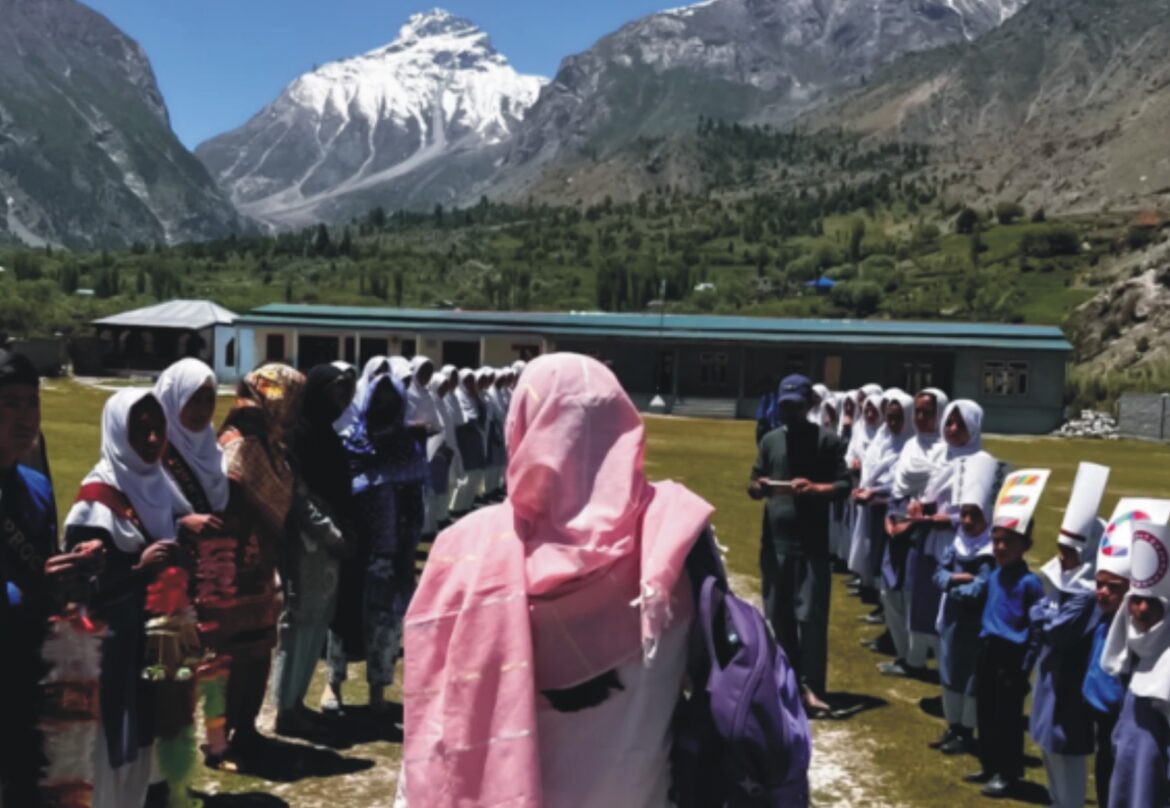The school had dirt floors and no chairs for the kids to sit on, let alone desks to work at. The 20 or so ninth-graders knelt shyly in formation on the carpet. Hana and I stood at the head of the room, two prep-school girls from the Upper East Side sweating in our headscarves and camises.
Under pressure from our mothers, both Pakistani natives bent on teaching their teenage daughters to champion the cause of poor girls, we’d grudgingly agreed to spend part of our summer vacation bringing school supplies over to Basha Valley. You won’t find it with a quick swipe on GPS: It’s the farthest-flung region in the mountains of northern Pakistan, a swathe of hamlets and subsistence farms that feels plucked from a prior century.
To get there, we’d flown 7,000 miles from New York City to Karachi, then waited three days for the weather to clear to board a second flight to the top of the world. So iffy are the conditions in northern Pakistan that planes only fly on the clearest days, threading heavy wind shears and white-knuckle updrafts above the Karakorum Mountains. We landed in Skardu – elevation, 8,000 – then awoke the next morning and drove further uphill to Basha Valley, four hours out. On foot for the last mile, we lugged backpacks loaded with notebooks and cameras across footbridges at nose-bleed heights.
At the time, I knew nothing about the girls of Basha Valley. I didn’t know these were the first girls in their villages to get past the third grade in school. That they were the first girls in their families not to be married off by 14 and that to get to this school, they’d walked an hour each way, wading (or sometimes swimming) across frigid washes when the glacial snows melted each spring. All I knew was that they spoke no English – and that I spoke almost no Urdu.
Hana and I struggled to connect with them at first. Even with their teacher doing rough translations, it was hard for us to tell them who we were and why we’d traveled so far. As someone would later tell us, we were the first American girls to travel to the Gilgit-Baltistan District.
There were long, awkward pauses till we opened our backpacks and handed out art supplies. Shyly, the girls started doodling and sketching as we loaded batteries into our camera. Then we took a Polaroid and shook it out as the girls looked on, perplexed. When we showed it to them, though, the energy shifted; they giggled and packed together for their group shot.
One of them grabbed the camera and took a picture of her friends; the other kids clamored for their turn. Suddenly, we were all just kids together, putting arms around each other and pulling faces. Hana and I relaxed for the first time since New York, suddenly grasping why our moms had made us come. We were Pakistani-Americans born in New York City who’d been raised in Western privilege. The only thing that separated us from the kids in this room was geography and the luck of birth.
Towards the end of the day, Hana and I excused ourselves and went looking for a bathroom. We were led outside the mud-brick building to a pair of courtyard stalls. Hana opened the first door and froze in place: the stall was a horrorshow. Instead of porcelain fixtures, there was a hole in the ground, where swarms of flies buzzed madly. The walls were smeared with menstrual blood; neither Hana nor I could bear to step inside. We were shocked and outraged for the girls we’d just met. They had no access to basic hygiene.
With that stench in our nostrils, we went back to the hostel and talked to Naureen Fizza, a staffer for the Iqra Fund. Iqra, an NGO founded in 2011 by an American mountain climber named Genevieve Walsh, has built and/or operates sixteen schools in grossly underserved northern Pakistan. Naureen, an Iqra grad and one of the first to finish college, told us that the girls here faced additional hardships beyond poverty and isolation.
They either didn’t go to school or were forced to drop out early so they could help their moms work the fields. Most were pregnant by fourteen. And the few girls lucky enough to remain in school would miss days or weeks of class when their periods happened. So poor were their families that menstrual products were out of the question; one sanitary pad cost the equivalent of a full day’s wages.
Forced to make do, these girls shared rags with each other and were too ashamed to hang them on a line. As a result, vaginal infections ran rampant in the valley. Recently, a young girl died of an infection, after using a soiled rag she’d found outside.


